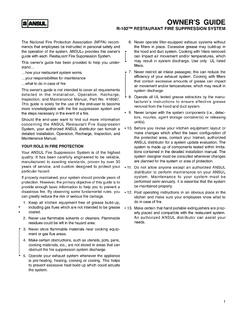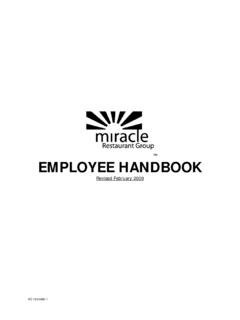Transcription of Foundry, forge or kiln propane burner Instructions
1 Foundry, forge or kiln propane burner Instructions Copyright 2013 by: Lionel Oliver II This item is not for sale to minors. Using a gas burner involves danger from extreme heat. This burner produces flames and high temperatures which could result in injury, loss of life or property damage. Burns and unwanted fires may result especially from careless usage. Safety precautions should ALWAYS be followed. You are responsible for using this item safely and keeping the item in safe working order. Use of this item is at your own risk. Neither the manufacturer, the seller nor anyone affiliated with the manufacturer or the seller is responsible for any damage or injuries, no matter how minor or major that may result from the proper or improper use of this item. By purchasing this item the buyer agrees to the above terms and to be solely responsible for his or her usage and the usage of anyone who uses this item with or without the buyer's consent.
2 If you do not agree to these terms DO NOT buy this item. propane gas can accumulate and ignite explosively when used incorrectly. propane fumes can cause suffocation from inhaling them. If you have any questions about properly using or storing propane or other fuel gasses con-tact your nearest gas distributor. Safety should ALWAYS come first! Setting up the components Setting up the propane components is fairly basic. The components necessary are; the propane tank, regula-tor, propane hose, attachment fittings and an optional attachment is a propane pressure gauge. Most hobbyists use the propane tank size designated as the 20-pound tank. These are commonly used for gas barbecue grills. One of these tanks can be expected to give about 6 hours worth of melting time.
3 But that is an approximation since several variables effect the time. Such as burner size, pressure setting, etc. Larger propane tanks can be used as well. The propane regulator is essential for safely using the self-aspirated burner design. Self-aspirated sim-ply means that the burner provides it s own combustion air as compared to a forced-air burner which re-quires an air blower. Another name for the self-aspirated burner is atmospheric burner because atmos-pheric pressure pushes air into the burner as a result of the vacuum effect created by the gas jet. Only high pressure regulators will work with self-aspirated burners. And the regulator needs to be ad-justable. The small regulator used on most gas grills will not work because they provide the propane at a low pressure (about 5 ounces).
4 The pressures needed for these burners range from about 5 to 25 pounds (PSI). There are several sources for these regulators. Plumbing and welding supply stores will most likely have them but at a high price. However they will probably be high quality units and pos-sibly contain a built in pressure gauge. Lower cost high pressure regulators may be available from restaurant supply stores or camp-ing catalogs. Some high output gas appliances such as cook stoves and turkey fryers require them. If you have trouble locating them locally there are sources for them on the internet and some are listed in the suppliers section of this manual. The propane hose should be 10 feet long for safety. The black rubber propane hoses should be available at a fairly low cost.
5 Custom lengths can often be fabricated by the seller. Since propane dissolves some types of rubber it is not safe to use hoses designed for other gasses such as natural gas or acetylene. Only hoses specifically labeled for propane should be used. The ends of the hose should have brass fit-tings that match common pipe sizes. 1/4" nominal pipe (NPT) size threads are very convenient. Sources for Here is a propane tank and an adjustable high pressure regulator is screwed into the valve with the propane hose extending to the left. hose are also listed in the suppliers section. A propane pressure gauge is convenient for when you want to know exactly what pressure your burner is running at. However it is not necessary. The attachment fittings used will vary depending on the way you choose to attach the burner to the pro-pane hose.
6 Two methods are illustrated below. Both methods begin the same. The adjustable high pressure propane regulator is screwed into the valve of the propane tank. The gas outlet of the regulator is where the pressure gauge will be installed (if you choose to use one). If not the pro-pane hose will screw into this spot. The way the hose attaches to the burner is where the two methods differ. In the first method the propane hose has the end fitting (usually a 3/8 attachment) cut off and replaced with a brass hose barb that matches the inner diameter of the hose. It s secured with a stainless steel hose clamp. 1/4 male threads are on the fitting. If your hose already comes with 1/4 male threads on each end then the hose barb is not necessary.
7 These threads screw into the 1/4 x 1/8 reducer on the burner s fuel jet pipe. The second method uses the hose barb (already installed) to screw into a ball valve which is used for a quick shut off. The valve screws onto a short section of pipe called a nipple. The nipple then screws into the 1/4" to 1/8" reducer coupling on the burner . The convenient thing about having the ball valve at the burner is that you can open the propane tank s valve and keep the ball valve shut. Then when you re ready to fire up the furnace you can slowly open this ball valve to release the gas while keeping the propane tank safely away from the furnace. A third way to attach the burner that I have had success with is to use a quick coupler attachment. These couplers are designed for air tools but I ve found them to work well for the propane burners.
8 However as a precaution, it is necessary to check that any rubber seals in them do not degrade and leak from the propane . To use the quick coupler, the hose barb (attached to the hose as described previously) is screwed into the female half of the quick coupler unit. The male coupler fitting, which is the smaller part is screwed into the burner s reducer fitting. This is illustrated in the next photo. Igniting the furnace, forge or kiln With the lid raised prepare to light the furnace. An easy way to do this is to crumple a piece of newspaper and drop it into the furnace in front of the burner . With the lid still up off the furnace slowly open the gas valve allowing gas the enter the burner . The flames should ignite the gas. Turn gas valve as needed for proper burner function-ing.
9 There are multiple ways to attach a propane hose. Here are two common ones. A quick coupler is very convenient to attaching and detach-ing the burner from the propane hose. CAUTION: Igniting the burner with a crumpled wad of newspaper may result in burning pieces of paper floating out the furnace. Once the burner is running properly lower the lid into position. If the burner did not ignite before the pa-per burned out allow the furnace to air out the gas fumes then repeat the procedure. If the flame extin-guishes CLOSE THE GAS VALVE IMMEDIATELY. Let the furnace air out and then relight it. If the burner will not stay lit the gas pressure at the regulator may be too high. Turn it down and retry the burner . On cold or windy days it may be difficult to ignite the burner reliably.
10 In this situation you can soak a piece of charcoal in charcoal lighter fluid and ignite it in front of the burner . This burning charcoal should keep the flame burning until the furnace is warmed up. Let the burner run at a lower flame setting for 2 minutes to heat the furnace before turning it up to full operating flame. If the burner produces a pulsating, type of sound there may be too much back-pressure in the furnace. Back-pressure is the pressure created from the burning gas as it expands and leaves the furnace as exhaust. Try sliding the burner backward away from the chamber. If that does not solve the problem the gas pressure may be incorrect. The burner sound should be like a smooth sound of rushing wind or like a large plumber s soldering torch.







